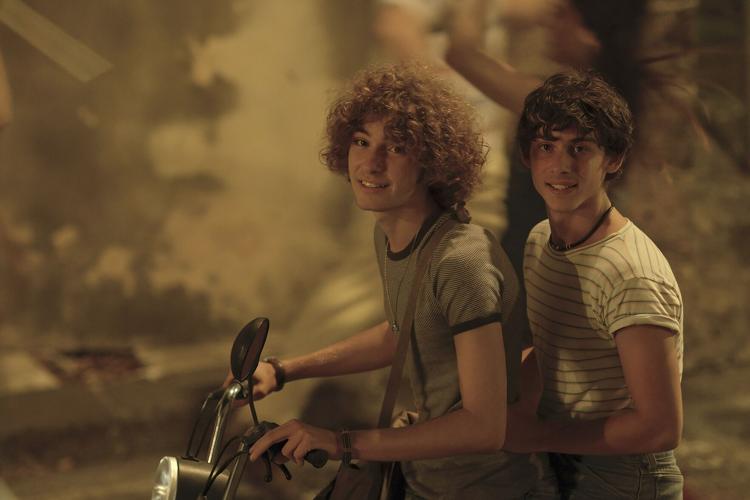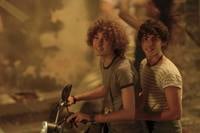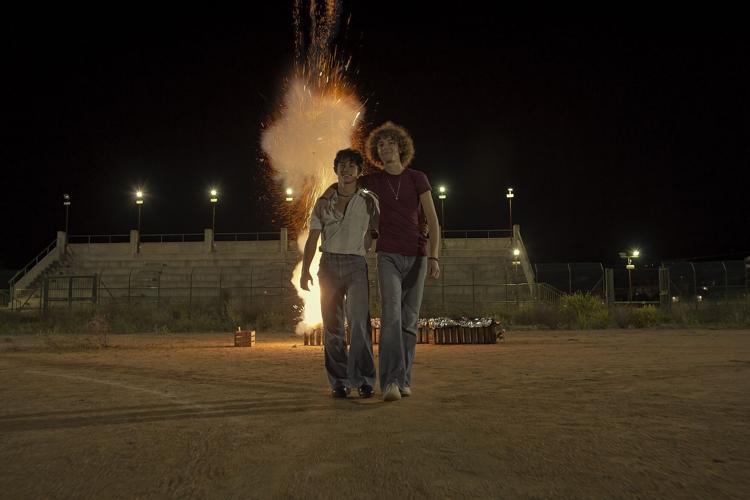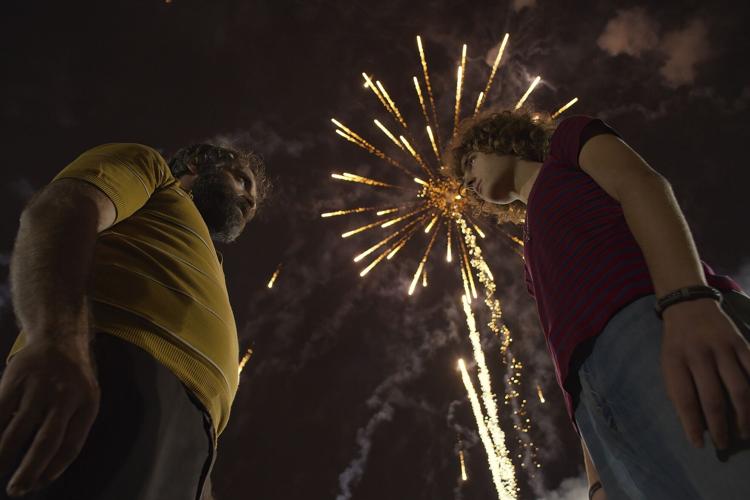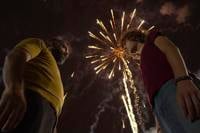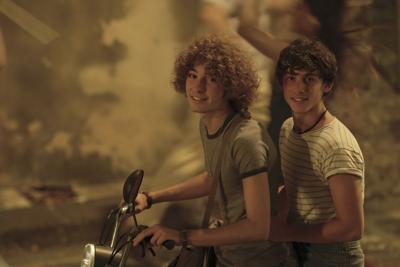This is the directorial feature debut of Giuseppe Fiorello, an Italian actor who has worked in Italian television for over 20 years. He notably had a role in The Talented Mr. Ripley (1999). He also co-writes this story, which was inspired by a true incident. Arcigay is a LGBTQ organization that was founded in 1980. It was formed in response to the murders of two gay men in Sicily who were shot in the head by the nephew of one of them. Fiorello's film imagines a fictionalized series of events, leading up to said murders. Yet, this film isn't about the crime. The narrative in fact ends before the crime occurs. Whatever information is known or not known, it makes the film not have to adhere to the real-world incident exactly, given that there are conflicting stories about it. Instead, Fiorello invokes a feeling that establishes the underlying homophobia that likely led to the deaths but also the thrill of the two young men discovering each other and likely falling in love.
Fiorello also builds up to another crucial event in Italian history. The film also builds to the 1982 FIFA World Cup in which Italy played against West Germany. The game in reality took place two years after the incident that inspired Arcigay. Yet, Fiorello's screenplay seemingly has the murders and the World Cup take place in the same year or same time-frame. There could be several explanations as to why Fiorello conflates the two events, despite their being separate in reality. The World Cup that year was a source of national pride. Fiorello places an expression of gay pride in the middle of that very source of national pride. It could be Fiorello's way of saying that there is no difference between the two forms of pride or at least there should not be any distance between them.

It's similar to his depiction of the celebration of Saint Sebastian, which is a festival or feast that the Italian people have in the streets and in the town's square. There's a parade and even fireworks that go off, which is where the English title of this film derives. Gabriele Pizzuro stars as Nino, the teenage son of a man who owns a fireworks company that supplies the light display for every celebration in this Italian town. Nino's father is asthmatic and when he has an asthma attack, Nino takes over the business. Nino gets a moped as a present from his father, which he loves to drive all around the countryside. When one day, he literally runs and crashes into Gianni, played by Samuele Segreto, another teenager who works at a garage that fixes mopeds and motorbikes, sparks start to fly between the two boys that aren't that dissimilar from the sparks from the actual fireworks.
It's well established that being gay or having same-sex attraction is forbidden in the town. It's also the source of homophobic bullying and violence. Obviously, their feelings are something that Nino and Gianni want to keep secret. Yet, their attraction toward each other is undeniable and often something that they can't or simply don't do a good job of hiding. It's either out of defiance or again a sense of pride within them. The boiling point of the town doesn't come to a head though until the two boys become so brazen as to conflate the national pride with gay pride themselves. The boys defy the boundary that separates what the town considers the paragon of masculinity, World Cup players, as well as their religious paragons, such as Saint Sebastian, with what being gay is. The two boys defy those boundaries and the town lashes out.

Fiorello doesn't underline this point, but Saint Sebastian has also become a queer icon in his own right. The image of a nearly naked, muscular man being penetrated with arrows or phallic symbols has been used by queer artists for years. One early example is Derek Jarman's Sebastiane (1976). Another is Scud's Utopians (2017). The fact that Fiorello utilizes Saint Sebastian's celebration as a pivotal moment in his film is very much pointed and continues the idea of the conflation or confluence of queer ideas within the fabric of Italian culture.
We get to know both Nino's family and Gianni's family. There's quite the number of people. There isn't much of them that we learn beyond their roles in relation to either Nino and Gianni. This is essentially true of the women in Nino and Gianni's lives. Yet, still Fiorello is able to convey a lot that makes each of their family members stand out. We come to understand them in a way that could've been as if we spent hours or days with each of the supporting characters. Fiorello shows how something tremendous come from something so simple.

Stranizza d'amuri.
Not Rated but for mature audiences.
Running Time: 2 hrs. and 14 mins.
Available on VOD and DVD via Cinephobia Releasing on January 16.

